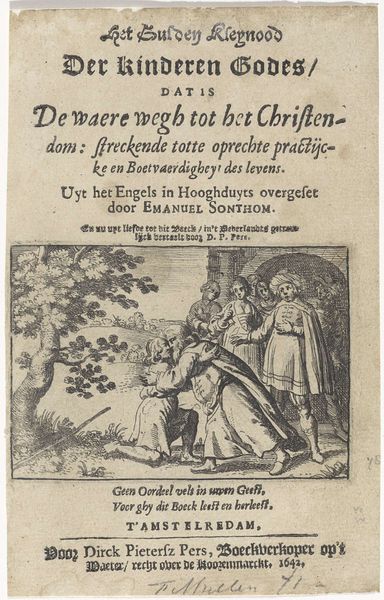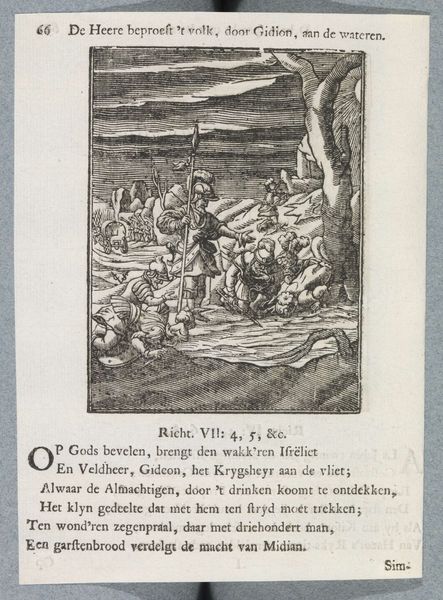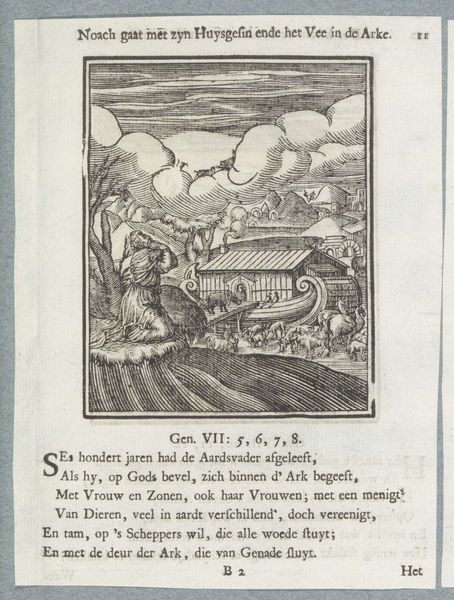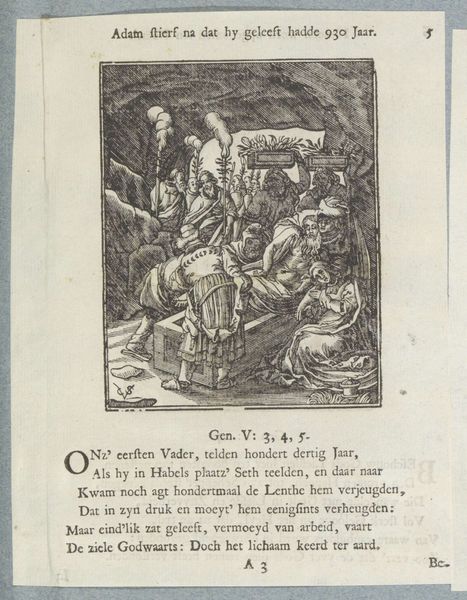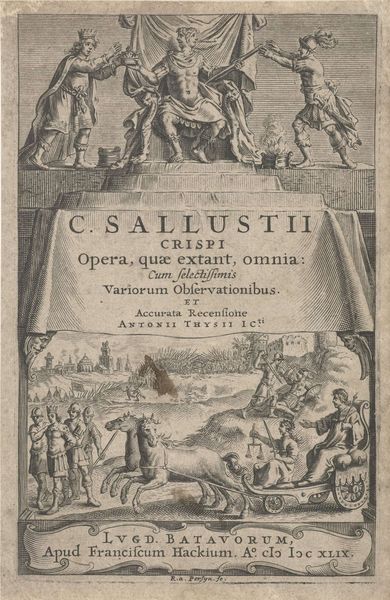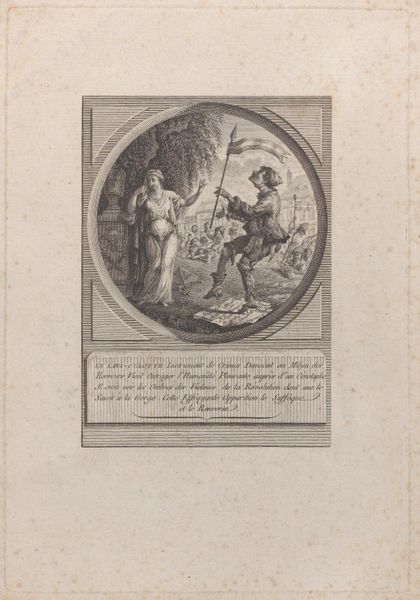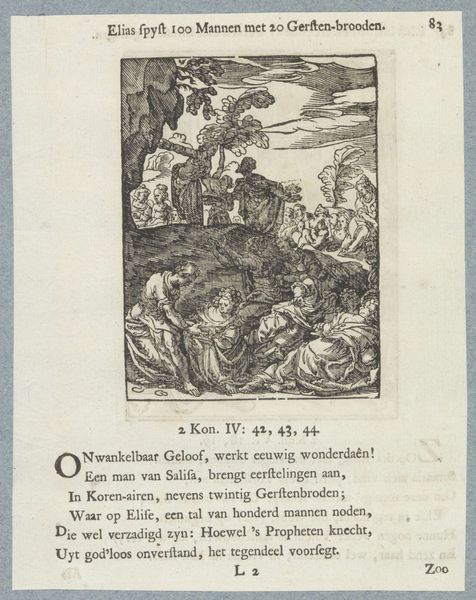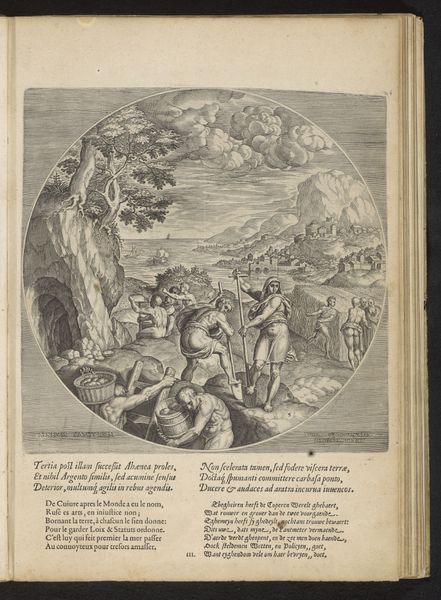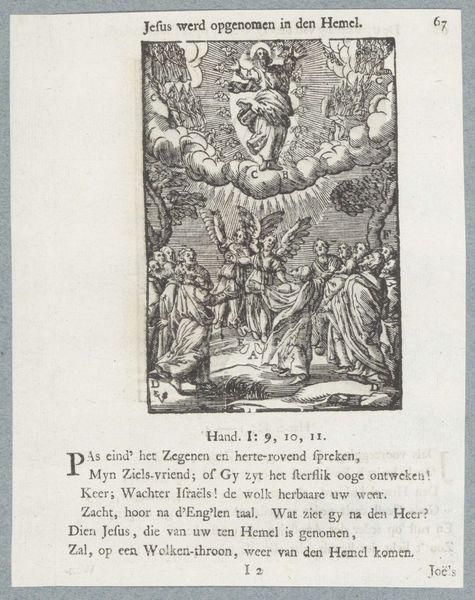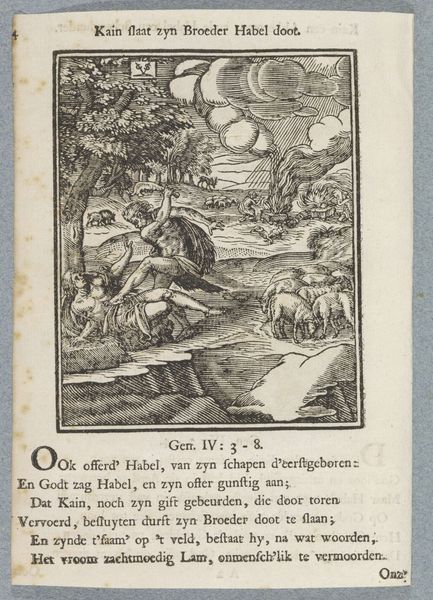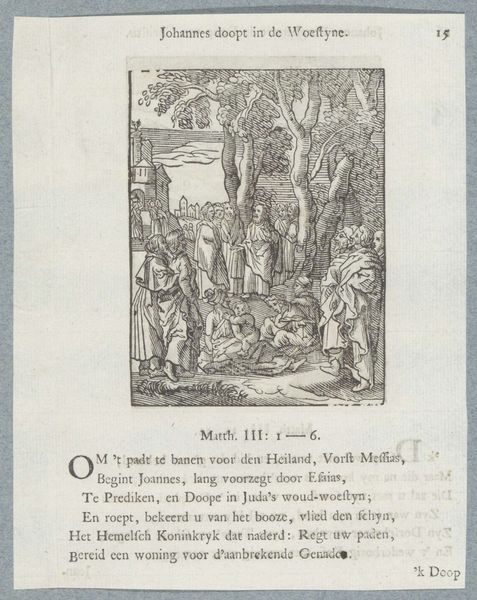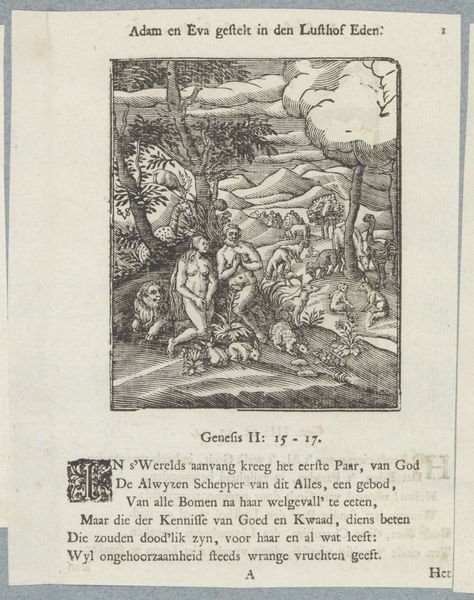
Titelblad voor het pamflet: Het Geschil Tusschen de Fransche Haan, en Lombaardsche Hennen, Beslegt door Jupiter, 1701 1701
0:00
0:00
print, engraving
#
allegory
#
baroque
# print
#
old engraving style
#
figuration
#
line
#
history-painting
#
engraving
Dimensions: height 175 mm, width 140 mm
Copyright: Rijks Museum: Open Domain
Editor: Here we have "Titelblad voor het pamflet: Het Geschil Tusschen de Fransche Haan, en Lombaardsche Hennen, Beslegt door Jupiter," from 1701 by Romeyn de Hooghe. It’s an engraving on paper, currently at the Rijksmuseum. It's pretty busy! I'm struck by how this feels like a political cartoon but with mythological figures and farm animals... What's going on here? How should we interpret it? Curator: It's definitely a commentary on political disputes through allegory. We see Jupiter, a figure from classical mythology, seemingly intervening in a squabble between a French rooster and Lombard hens. The "squabble," or "geschil" in Dutch, suggests a specific conflict—most likely the War of the Spanish Succession which involved many nations. Given De Hooghe’s strong anti-French sentiment, it critiques Louis XIV's expansionist policies. The print probably reflects Dutch anxieties about French dominance. What details in the print do you find most compelling in telling this story? Editor: Well, the sheer number of hens clucking around seems significant. And the eagle looming over them – that’s quite a powerful image. Jupiter's intervention seems…almost nonchalant. Curator: Exactly. Consider who Jupiter represents, and the power dynamics in play. Jupiter settling the dispute actually implies judgement. Does that act itself carry an argument about intervention and power? Beyond just documenting political tensions, prints like these played an active role in shaping public opinion during wartime. Who the artist makes vulnerable says quite a bit about the function of the imagery, no? Editor: So it’s not just a depiction, it’s active participation in the politics of the time. I never thought about prints being used to shape public opinion in that way back then. Curator: Precisely! These were visual weapons in a propaganda war, intended to sway sentiment and bolster morale at home while undermining the enemy’s image. Editor: That gives me a whole new perspective on how to look at this. Thanks! Curator: It’s all about the layers of meaning and understanding the context that brought this to life. It shifts our view of its value and use in a world very different than our own.
Comments
No comments
Be the first to comment and join the conversation on the ultimate creative platform.
